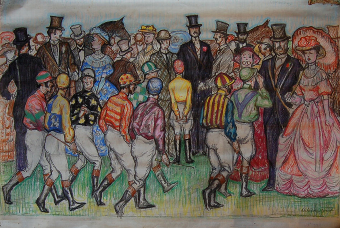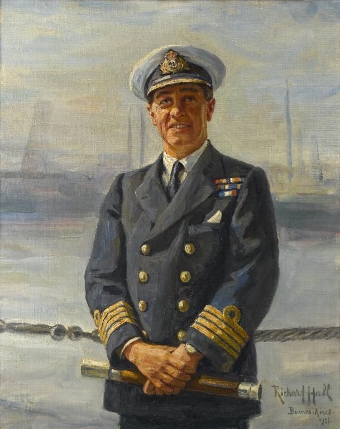featured item
vichy , france
- View other items in:
- antiques interior design modern and vintage
- other interior design
artware ltd
Enquire about this antique
Artware Ltd has 565 antiques for sale.
click here to see them all
Vichy is a commune in the department of Allier in Auvergne in central France. It belongs to the historic province of Bourbonnais.It is known as a spa and resort town and was the de facto capital of Vichy France during the World War II Nazi German occupation from 1940 to 1944.The town''s inhabitants are called Vichyssois. Up until the 18th century they were more properly known as les Vichois which stems from the Occitan name of the town, Vich?i. The writer Valery Larbaud uses the term Vicaldiens after the Ancient Roman name for the community. With 80,194 inhabitants, Vichy''s urban area is the second largest in the Auvergne region behind Clermont-Ferrand. The city enjoys a continental climate climate that incorporates some characteristics of a mountainous climate because of the nearby Massif Central and Alps.Heavy snows in the Massif Central often make roads impassable, but Vichy is low enough at about 800 feet (260 metres) above sea level that the climate is more continental. Rainfall is moderate around Vichy, averaging about 30 inches (75 centimeters) annually.
In 52 BC, on returning from their defeat at the Battle of Gergovia by the Gallic legions of Vercingetorix, the Romans established a township at their crossing on the Flumen Elaver (Allier). These Roman settlers had acknowledged the therapeutic value of the springs in the area and were eager to exploit them. During the first two centuries AD, Vichy was very prosperous because of these thermal springs.At the end of the 3rd century, the Roman Emperor Diocletian undertook a vast administrative reorganization and land-survey. At that time the hypothetical and reconstructed place name VIPPIACUS first appeared (name of an agricultural field belonging to a certain VIPPIUS)[4] which, by phonetic evolution, became Vich?i in Occitan (and then, Vichy in French).Middle AgesOn September 2, 1344, Jean II ceded the noble fiefdom of Vichy to Duke Pierre I of Bourbon. On December 6, 1374, the last part of Vichy was acquired by Louis II, Duke of Bourbon. At that point Vichy was incorporated into the House of Bourbon. In 1410, a Celestinian monastery was founded with twelve monks. A building located above the Celestinian Spring is still visible.In 1527, the House of Bourbon was incorporated into the French Kingdom. By the end of the 16th century, the mineral baths had obtained a reputation for having quasi-miraculous curing powers and attracted patients from the noble and wealthy classes. Government officials, such as Fouet and Chomel, began to classify the curing properties of the mineral baths.
Vichy''s thermal bathsThe marquise de S?vign?, was a patient in 1676 and 1677 and would popularize Vichy''s Thermal Baths through the written descriptions in her letters. The Vichy waters were said to have cured the paralysis in her hands, thus enabling her to take letter-writing. In 1761 and 1762, Ad?la?de and Victoire of France, the daughters of Louis XV, came to Vichy for the first time and returned in 1785. The bath facilities seemed extremely uncomfortable to them because of the muddy surroundings and insufficient access. When they returned to Versailles, they asked their nephew Louis XVI to build roomier and more luxurious thermal baths, which were subsequently completed in 1787.
Vichy welcomed 40,000 curistes in 1900 and this figure had risen to nearly 100,000 just before the onset of the First World War. La vie thermale had its heyday in the 1930s. The success in treating ailments that was attributed to the Vichy Baths led la Compagnie Fermi?re to enlarge the Baths again by creating the Callou and Lardy Baths. The Art Nouveau-style Op?ra, inaugurated in 1903, accommodated all the great names on the international scene. Vichy became the summertime music capital of France, but the war of 1914 would put a brutal end to this development.
Vichy France?seat of the ?tat Fran?ais, the Nazi collaborationist government. Following the armistice signed on June 22, 1940, the zone which was not occupied by the Germans took the name of the French State (?tat Fran?ais) (as opposed to the traditional name, R?publique fran?aise or French Republic) and set up its capital in Vichy on July 1, because of the town''s relative proximity to Paris (4.5 hours by train) and because it was the city with the second largest hotel capacity at the time. Moreover, the existence of a modern telephone exchange made it possible to reach the whole world via phone. On July 1, the Government took possession of many hotels. Six hundred members of the French Parliament (Appointed Members and Senators) would come to Vichy for the meeting of the Chambers. On the 9th and 10th, in the main auditorium of the Opera House, the members of Parliament voted for the end of the Third Republic. The republican system was abolished, and the French State, with Philippe P?tain at its helm as Head of State, replaced it. Only 80 of the 600 members of Parliament voiced their opposition. Starting from this date, Vichy would be, for more than four years, the capital of the French State. This government is often called the Vichy Regime. The preferred term is "P?tainist Regime" or "Regime of the French State." The term "Vichyste," which designates partisans of this regime, should not be confused with "Vichyssois" which designates the inhabitants of the city. The latter term is sometimes used erroneously to designate P?tain''s supporters. The 1950s and 1960s would become the most ostentatious period for Vichy, complete with parading personalities, visits from crowned heads (The Glaoui, the Pasha of Marrakech, Prince Rainier of Monaco) and profits from a massive influx of North African French clients who holidayed in Vichy, spending lavishly. There were thirteen cinemas (which sometimes showed special previews), eight dance halls and three theatres. It was at this period that the station would take the title of "Reine des villes d''eaux" (Queen of the Spa Towns). From June to September, so many French-Algerian tourists were arriving that it almost seemed like there was an airlift set up between Vichy-Charmeil and the airports of Algeria. Mayor Pierre Coulon (1950?1967) decided to create Lake Allier (June 10, 1963) and Omnisports Park (1963?68), giving the city its current look. The war in Algeria, which led to decolonization, marked once again a halt in the prosperity of this city, which from then on had to deal with much less favorable conditions. The need to continue to pay the debts incurred by the considerable investments that had been made in more prosperous times obligated the new mayor, Jacques Lacarin (1967?1989), the successor of Pierre Coulon, to adopt a much more careful policy of management.
Antiques.co.uk Ref: W44MJKFQ
- Materials:
- Pencil and Watercolour
- Width (cm):
- 11 x 15 in. 28 x 38 cm.
Artware Ltd
Artware Fine Art specialises in fine antique, decorative and historical portraits and topographical pictures . We cover a period from the 17th and 18th centuries through to the 19th & 20th Centuries. We have over 150 portraits in stock, which can be viewed on our web site, each historical portrait has well researched biographical information both on the sitter and the artist.
Contact details
18 La gare
51 Surrey row
London
Greater London
SE1 0BZ
UNITED KINGDOM
T: 0207 921 97904
E: greg@artwarefineart.com
W: www.artwarefineart.com
Other antiques available from artware ltd
-
![Portrait of William Lamb, 2nd Viscount Melbourne, PC, FRS 1779-1848]() £7000.00
£7000.00portrait of william lamb, 2nd viscount melbourne, pc, frs... Read more
-
![Crowd scene at Royal Ascot Ladies Day with Jockeys walking to the paddock]() £300.00
£300.00crowd scene at royal ascot ladies day with jockeys walkin... Read more
-
![PORTRAIT OF REAR ADMIRAL JAMES SACHEVERELL CONSTABLE SALMOND, RN (1882-1958)]() £2500.00
£2500.00portrait of rear admiral james sacheverell constable salm... Read more
-
![Portrait of a Woman in White shawl before a decorative background]() £4500.00
£4500.00portrait of a woman in white shawl before a decorative ba... Read more














